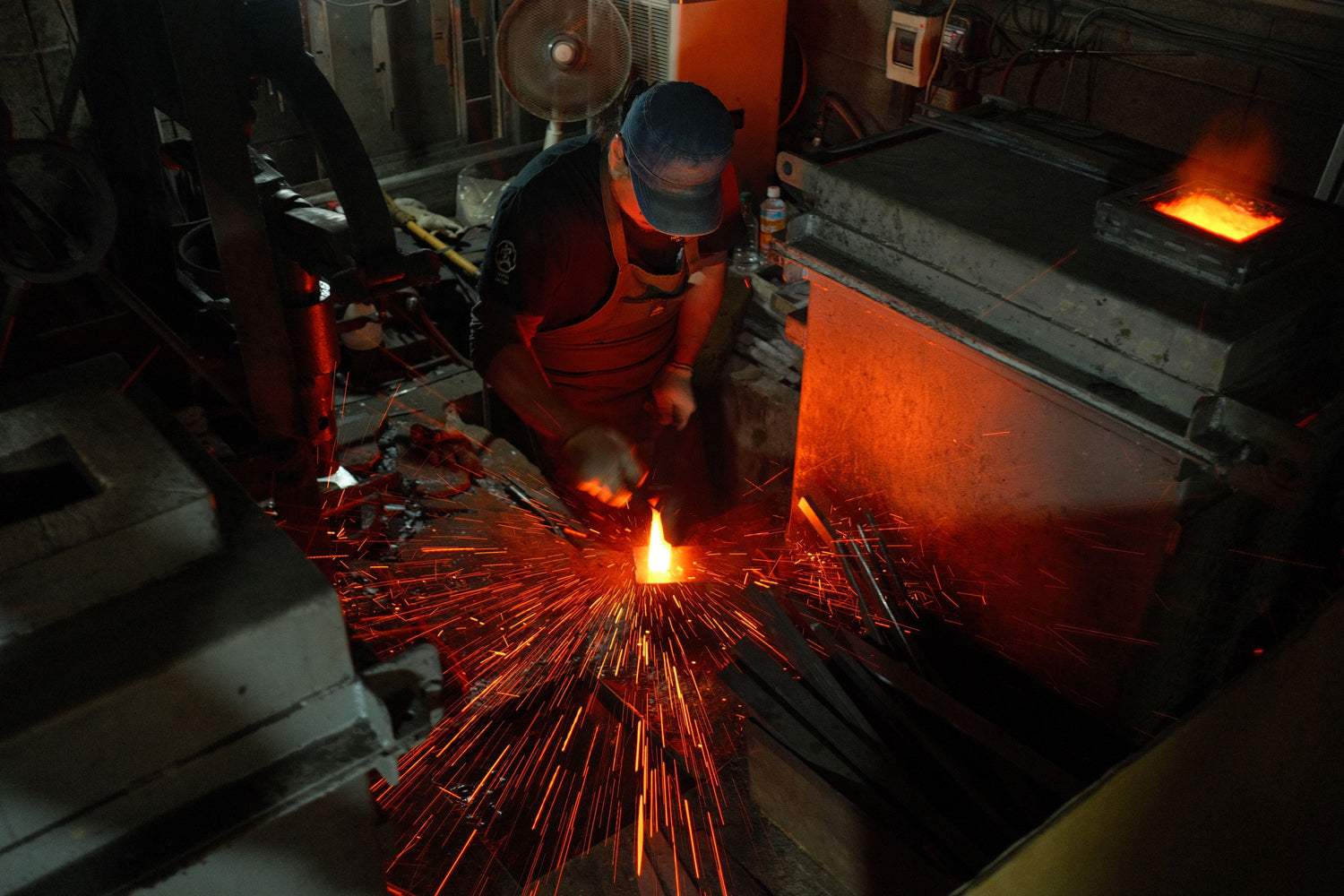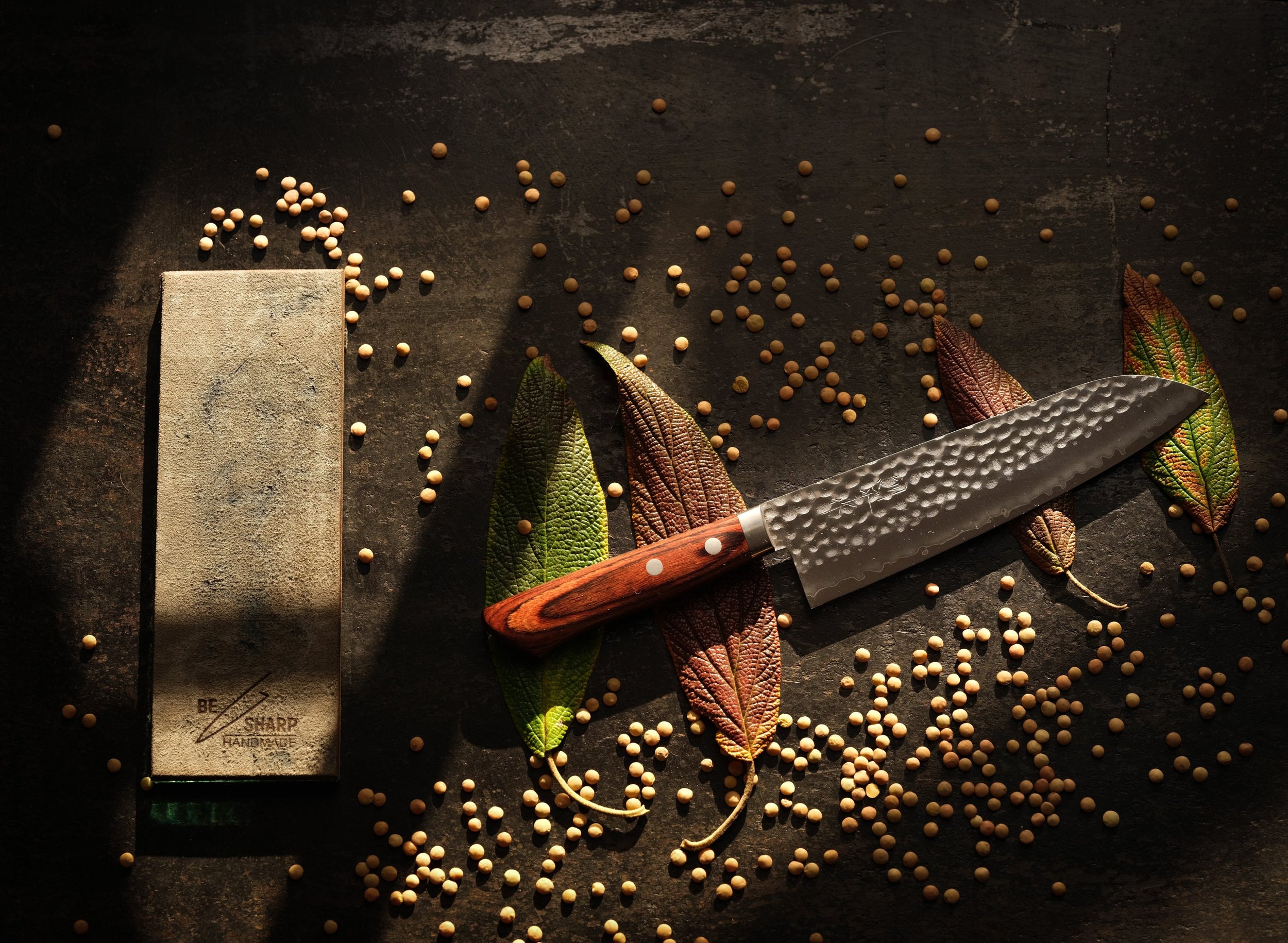Forging Japanese knives

TAKEFU - JAPANESE KNIFE VILLAGE
The story of Takefu Knife Village begins in the 1970s with the association of the top 10 blacksmiths of that time!
The period of prosperity in Japan after World War II put to the test the small family forges that until then produced only traditional knives. Mass-produced knives that were stamped in the millions appear and slowly shut down these forges one by one.
In response to their need for survival, 10 of Echizen City's best blacksmiths band together, and every night after their work is done, they meet in the hope of finding a solution to their problems that threaten to shut down their generations-old forges forever.

Some of the problems were a drastic decline in sales, fewer and fewer heirs, a lot of noise that bothered the city neighbors and, of course, the slow but inevitable aging of the craftsmen.
They did their work during the day, and at night they would develop projects and prototypes. Their struggle lasted for years. With considerable borrowing, in 1992, they finally managed to build a joint facility located in Takefu village, where they work and exchange knowledge to this day.
Their knives are by far the most valued in the world, and in order to get your hands on one, you have to be on a long-standing waiting list.
In addition to the enormous attention of consumers, the Takefu village of knives also attracted a large number of apprentices who forged their trade here and founded new companies that are achieving success in the world market of premium knives!
The founding blacksmiths of this association are Takeshi Saji, Shiro Kamo, Hiroshi Kato, Katsuyasu Kamo, Katsushige Anryu, Haruji Totani, Hideo Kitaoka, Masanobu Okada, Kazuyoshi Honda and the late Masami Azai.

If you are interested in this topic, we highly recommend watching the documentary film Springhammer . Some of the best Japanese blacksmiths of today participated in the making of the film, who will explain all this even better.
SPRINGHAMMER - SPRING HAMMER FOR FORGING KNIVES
Unlike the days when blacksmiths had apprentices who would spend hours hammering red-hot steel, today the "springhammer" does their job.

The spring hammer or "springhammer" is found in every forge that sticks to the craft and forges its own blades. A large steel spring allows the hammer to strike the workpiece with tremendous force and quickly return to its original position, ready for another strike. Using this hammer, the skilled hands of the blacksmith stretch small pieces of steel until the shape of the knife is obtained. The most skillful blacksmiths do this work in just a few minutes, and some of them forge two knives at the same time.

This process is not only important to get the shape of the knife, but it systematically changes the structure of the steel. Namely, the steel particles are carefully compressed, creating a bond that results in an extremely hard structure. This allows for longer processing of the steel when grinding, which again results in a better quality blade.
All of these are reasons why blacksmithing remains valued, and hand-forged knives always perform better than those made from finished sheets of metal.
KAITEN TOISHI - GRINDING STONE
Kaiten Toishi is the name for a large-diameter Japanese whetstone that rotates with an electric motor and passes through water. This machine had a huge impact on the production of Japanese knives.
All well-known Japanese blacksmiths use Kaiten Toishi exclusively for profiling their blades. The task of the stone is to effectively remove material from the knife without heating the steel and create a delicate geometry that gives them the reputation of the sharpest blades in the world.

Only with the help of this stone is it possible to make traditional Japanese knives - janagibe, debe and usube. Knife manufacturers in Japan say that this is the most important step in production, and up to 90% of the knife's performance is determined by adequate processing on this machine.
Mastering the art of sanding takes years of practice, and the craft takes a lifetime to perfect. Only a few such machines can be found outside of Japan, as they are often made only to order, and higher-quality examples cost several thousand euros.
The invention of this machine created a turning point from the focus on blacksmithing and pushed grinding to the forefront. In this sense, before the invention of the electric motor, blacksmiths did much more work with a hammer in order to grind as little as possible by manual methods. Today, when the machine moves the stone, most of the work is focused on grinding, and this is what led to the need for such a machine.

Our western version is a belt sander that uses so-called "endless" sanding belts. However, the difference is big because regardless of the cooling system used, the western machine heats up the steel to a greater or lesser extent.
The result of using the Kaiten Toishi stone is a better geometry of the knife, easier penetration through food, a superior blade that not only cuts better, but also retains its sharpness much longer. These are just some of the reasons why professionals prefer Japanese kitchen knives.






